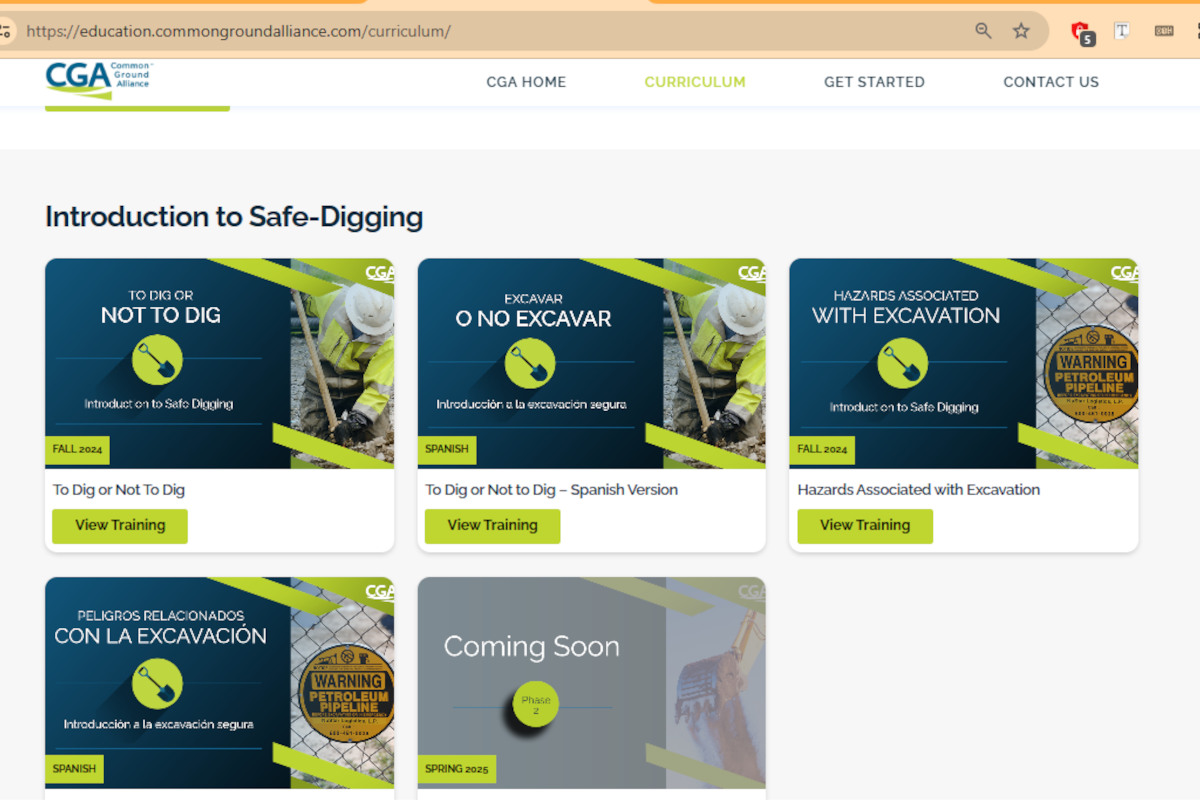
Tech Forum: Developing A Successful Trench Safety Toolbox Talk Series
The challenges of trenching and excavation jobsite safety are faced by utility employees and contractors daily. Every employer and employee working at these sites needs to be knowledgeable about trench safety practices including recognizing hazards, site evaluation and safety precautions.
Toolbox talks provide informal, topic-specific, short-format meetings to offer an opportunity to teach employees how to recognize trenching hazards, abate the recognized hazard, and reinforce basic trench safety procedures. As a Dodge Data & Analytics Report noted, “toolbox talks continue to be the most effective means of communicating with jobsite workers about safety.”
RELATED: Last Word: Sustainable and Resilient Construction and Infrastructure Management
The Occupational Safety and Health Administration (OSHA) has made reducing trenching and excavation hazards a priority at the agency. Trench collapses, or cave-ins, pose the greatest risk to employee safety. Employees working on a trenching site should know that trenches deeper than 5 ft require a trench support system. More information can be found at: https://www.osha.gov/Publications/trench_excavation_fs.html
Toolbox Talk Topics
Here are seven topics that can be the foundation for a toolbox talk series to advance worker knowledge about trench hazards and safe work practices in trenching and excavation operations. They can serve as a starting point in building the more detailed information needed to create meaningful toolbox talks.
OSHA 12 Specific Requirements. Review the 12 specific requirements related to excavations specified by the Occupational Safety and Health Administration (OSHA 1926.651 General Requirements). The competent person must know these, but anyone working in or around a trench or excavation should be aware of these minimum requirements.
Discuss the 12 specific requirements, which address areas such as access and egress, exposure to vehicular traffic, warning systems and more, to promote greater awareness.
Soil Classification. Proper soil-type identification through visual and manual tests is required to identifying the correct protective system solution. The soil type dictates the trench protective system that can be used – sloping, benching, shielding or shoring. The weight of a cubic yard of soil is over 3,000 lbs. An average cave-in consists of three to five cubic yards. Soil needs to be reevaluated anytime site conditions change.
Protective Systems – Sloping/Benching. Sloping and benching protect workers from cave-ins by cutting back trench walls. With sloping, the wall is cut at an angle inclined away from the excavation. Benching involves excavating the sides of an excavation to form one or a series of horizontal levels or steps. A toolbox talk can review common mistakes associated with benching. These include benching in Type C soil, which OSHA does not allow; failing to bench Type B soil appropriately – OSHA allows for a 4-ft vertical rise, but requires the horizontal run be 8 ft; and benching in granular soil, OSHA allows benching in cohesive soil only – never in granular soil.
RELATED: Legally Speaking: OSHA ‘Hot’ Over Heat Stress
Protective Systems – Shoring. Shoring is an active system designed to prevent cave-ins by applying positive pressure against trench walls. Conduct a hands-on talk with a hydraulic vertical shore, reviewing available sizes, limitations, installation instructions and proper usage. Remind workers it is critical that positive shoring be placed correctly, according to the manufacturer’s tabulated data.
Protective systems – Shielding and Trench Boxes. These are passive systems; they don’t prevent cave-ins like shoring does. They are designed to withstand a cave-in and protect workers provided the shield is properly installed. Review shielding options available, including aluminum boxes and steel boxes.
Tabulated Data. Review different types of tabulated data that come with all manufactured shielding and shoring equipment. This data details proper equipment use and limitations, covering areas such as assembly instructions, soil types and maximum depth rating. Remind workers this information must always be onsite, either on paper or electronically. If the scope of work is outside what the equipment is rated for per the tabulated data, another protective system needs to be considered or an engineer needs to get involved to create a site-specific plan.
Site-Specific Engineering. Contractors can often utilize a protective system simply by following the OSHA charts or the manufacturer’s tabulated data. However, excavations near adjacent structures, underground utilities and roadways may come with unique and complex challenges that require professional input. Although contractors can usually utilize manufactured systems with tabulated data, there are times where additional guidance and stamped drawings from a professional engineer are necessary.
Employees must be trained to never enter a trench until it has been inspected by a competent person and deemed safe to enter. A trench can collapse in seconds, burying workers under the weight of thousands of pounds of soil making it very difficult to be safely rescued. Working together and educating on the use of appropriate protective systems, we can reduce employee injury and death in this high-risk industry. Employers should also ensure there is a safe way to enter and exit a trench and always keep materials at least two feet away from trench edges.
RELATED: Underground Construction Accidents Are Preventable
Advancing Trench Safety Knowledge
Maintaining up-to-date training on safety regulations and equipment solutions is a cornerstone to keeping utility construction workers safe, healthy and productive. Reviewing the fundamental principles covered in these toolbox topics with all employees will ensure that everyone has a good foundation and understanding of the basics of trench safety.
Tina Davis is a Customer Training Program Marketer for the Trench Safety Region of United Rentals.



